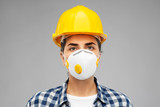Blog
The Ban on Respirator Mask Valves
Wearing masks in public has become a crucial part of protection for COVID-19. Some states and major cities have made mask-wearing a requirement. “Masks” can mean handkerchiefs, specially designed cotton masks, or
disposable masks (such as N95 respirators) as long as they cover your nose and mouth. However, some locations have banned masks with valves.
What is a Mask Valve?
Some masks or respirators will have a piece of plastic embedded in the fabric. This plastic is a one-way valve
…
Jun 22nd 2020
Are N95 Masks Reusable?
The recent Coronavirus (Covid-19) outbreak has created a lot of changes to how daily lives are lived and medical personnel perform their jobs. The shortage of N95 respirators has happened before (SARS, MERS, etc.), just not on this scale. The CDC does not recommend that the general public wears N95 respirators as protection from COVID-19 or other respiratory diseases: the best way to prevent illness is to avoid exposure, and respirators are invaluable to healthcare workers that need the added
…
Mar 30th 2020
Respirator Ratings: What Do N95 and P100 Respirator Ratings Mean?
If you and your team need to wear respirators on the job, it helps to have a means of comparing the relative protection between different respirators and filters. These ratings are designed to help protect you and your workers from different sets of airborne hazards. Sawdust and particles containing asbestos fibers are not the same. Neither should we use the same filter. If you use the wrong type of mask on the job, it could put you and your team at risk.
Learn more about N-, R-,
…
Mar 2nd 2020
How Often Should You Replace Your Dust Mask?
First of all, a dust mask is has a single strap that goes over the head and provides very little protection from particles and debris in the air. They're also called
nuisance dust masks and they're best used for mild applications like leaf blowing and general household dust protection. Dust masks just don't provide a good face seal and they protect about as well as nose hair, which is to say not that well. Replace them when they look dirty or after about 8 hours of wear. Honestly they're n
…
Nov 20th 2013





